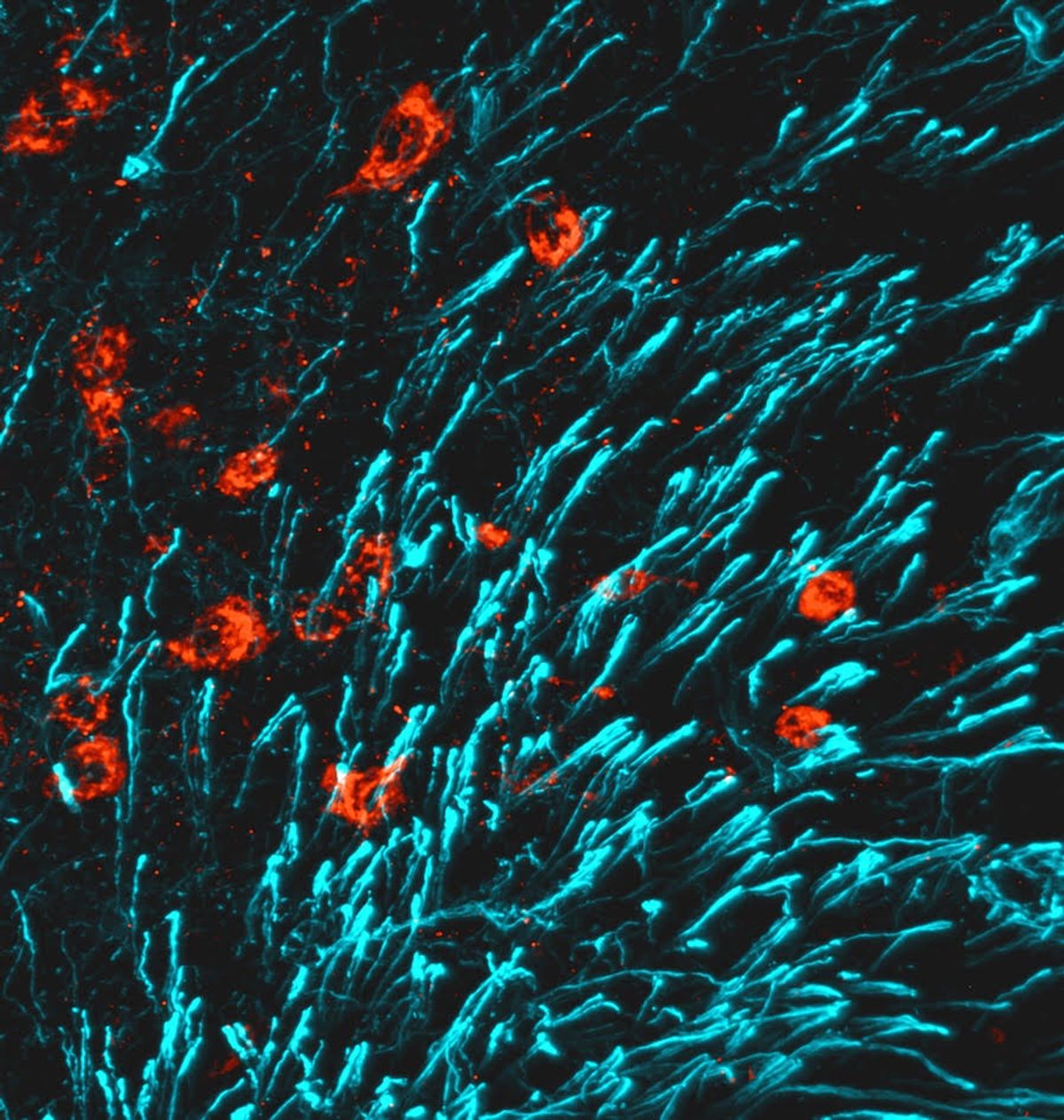ABOVE: Bones take a hard hit after pregnancy, but a new study shows how a hormone could be compensating for the loss. iStock, AsiaVision
Pregnancy takes a heavy toll on the body, brain, and bones. Although estrogen typically helps women maintain bone health, it goes offline after pregnancy, a time during which calcium is stripped from the bones due to lactation. Neuroscientist Holly Ingraham at the University of California, San Francisco wondered how the maternal body was able to counteract this calcium loss.
Now, Ingraham and her colleagues have identified a little-known hormone that, in estrogen’s absence, may take on the role of promoting bone health during lactation in mice.1 This finding, reported in Nature, could help clinicians and researchers tackle conditions characterized by bone loss such as osteoporosis.
“It's an important study in terms of providing new insights into the biology of how bone is regulated, particularly during lactation and weaning,” said Sundeep Khosla, a bone biologist at the Mayo Clinic who was not involved with the study.
Ingraham was inspired to study how hormones like estrogen work in the brain and body, particularly in the skeletal system, across different life stages. “There is so little basic information that we know about what is controlling female physiology,” she said.
One main factor that influences female biology is the hormone called estrogen. However, estrogen signaling dies down after pregnancy, menopause or anti-hormone treatments. To understand what happens when estrogen activity is dampened, Ingraham and her team deleted the estrogen receptor in cells in a specific area of the brain called the arcuate nucleus (ARC), which plays an important role in pubertal development and had been previously found to influence bone metabolism. They found, surprisingly, that female mice that lacked ARC estrogen signaling had improved bone health.2 “The bone phenotype was really phenomenal,” said Ingraham. “They were not only very dense, but they were strong.”
The team was intrigued by the finding that, despite the lack of estrogen receptors in this brain region, the bones were quite strong, so they went looking for a molecule that could be driving this. First, the researchers surgically joined the circulatory systems of wild type mice and those that lacked estrogen signaling and confirmed their suspicion that it was in fact a molecule in the blood because the bone-strengthening effects could be transmitted. When the team grafted skeletal stem cells into the mice lacking ARC estrogen signaling, they saw higher mineralization than in wild type mice, which suggested that the hormone present in mutant females promoted bone formation.

But identifying the specific factor driving the bone-strengthening effect turned out to be more difficult than Ingraham had expected. Some bioactive molecules have important functions in the body but are present in such low quantities that they are not detectable with conventional sequencing methods. It turned out that their mystery blood-borne factor was one of these rare molecules. It wasn’t until researchers fed the mutant mice with a high-fat diet, which activates the neurons in the ARC, that they were able to see gene expression changes in the brains of mutant mice relative to wild type mice.
Interestingly, the high-fat diet reversed the bone-strengthening effects. When the team looked in the brain, they saw that in mice lacking ARC estrogen signaling, those treated with the high-fat diet had reduced expression of a gene called ccn3, which encodes the hormone cellular communication network factor 3 (CCN3). CCN3 turned out to be the molecule responsible for promoting bone health in the estrogen-lacking mice. When researchers cultured skeletal cells with the CCN3 protein, the cells increased mineralization. Furthermore, when they injected the mouse version of the protein into wild type mice, the mice developed increased bone mass. CCN3 not only improved bone health in healthy mice but also spurred bone remodeling and accelerated fracture repair in young and old mice of both sexes.
Ingraham and her team wanted to link this to the lifecycle of female mice without any mutations. In wild type female mice, the team found that CCN3 levels in the brain surged after they gave birth, particularly during lactation. And when the researchers deleted the gene in the mouse mothers prior to pregnancy and eliminated the calcium in their diet during lactation, the progeny suffered: they had an increased risk of mortality, compared to those born to mothers with CCN3. Ingraham speculates as to why that might be. “To me [this is] a fascinating evolutionary question, which must go on all the time: When moms are challenged, either by diet or some environmental challenge, how do they make that decision to preserve [themselves]?” Ingraham wonders.
There are still many questions, including how exactly CCN3 works on the bone to promote healing and growth. Still, the findings suggest that CCN3 is critical for bone health, particularly after pregnancy. “If this hormone wasn't there that would really cause complete deterioration of the maternal skeleton,” said Khosla. However, Khosla pointed out, there is still bone loss postpartum and during lactation in humans so questions regarding CCN3’s impact still remain. Studying CCN3 further could help inform therapies to improve bone health and to identify those who may be at risk of bone loss.
It also underscores the need to study hormonal signaling. “It's always fascinating when a new hormone is identified,” said Khosla. “We keep thinking that we really understand physiology and then find yet another player.”
- Babey ME, et al. A maternal brain hormone that builds bone. Nature. 2024;632:357–365.
- Herber CB, et al. Estrogen signaling in arcuate Kiss1 neurons suppresses a sex-dependent female circuit promoting dense strong bones. Nat Commun. 2019;10:163.




